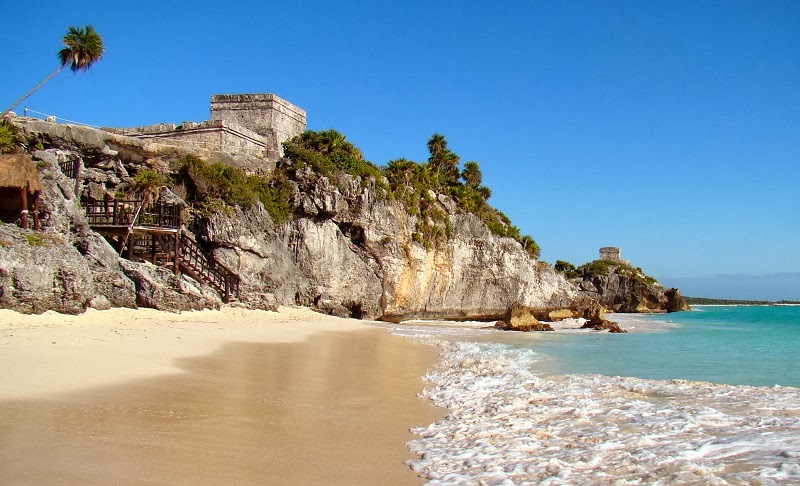
What To See
Tulum is the site of a Pre-Columbian Maya walled city serving as a major port for Cobá. The ruins are situated on 12-meter tall cliffs, along the east coast of the Yucatán Peninsula on the Caribbean Sea in the state of Quintana Roo, Mexico. Tulum was one of the last cities inhabited and built by the Mayas; it was at its height between the 13th and 15th centuries and managed to survive about 70 years after the Spanish began occupying Mexico. Old World diseases brought by the Spanish settlers appear to have been the cause of its demise. One of the best-preserved coastal Maya sites, Tulum is today a popular site for tourists.
The Maya site may formerly have been known by the name Zama, meaning City of Dawn because it faces the sunrise. Tulum stands on a bluff facing east towards the Caribbean Sea. Tulúm is also the Yucatan Mayan word for fence, wall or trench, and the walls surrounding the site allowed the Tulum fort to be defended against invasions. Tulum had access to both land and sea trade routes, making it an important trade hub, especially for obsidian. From numerous depictions in murals and other works around the site, Tulum appears to have been an important site for the worship of the Diving or Descending god. Tulum had an estimated population of 1,000 to 1,600 inhabitants.

Tulum is mostly known for its ruins, which strike an impressive image next to the sea, but were constructed during a time period of Maya culture that was waning. The site is notable for a small cenote (albeit dry during Jan 2009), beautiful beach below the ruin laden cliffs and some well preserved stellae in only one of its structures. After visiting other ruins in the area such as Coba, Chichen Itza and Ek Balam, Tulum's main claim is the sea-side setting. It is best visited on a clear, bright day or at sunrise. Bring your swimming suit. At the time of writing, one of the best sections was closed to visitors and covered with plastic bottles and other refuse.

Tulum is also famous for its cenotes; Mother Nature’s own crystalline fresh water pools. These cenotes are openings to the vast underground river system which flows beneath the Yucatan Peninsula. Cenotes have provided freshwater to communities for thousands of years. Some interesting cenotes are located south of the Tulum pueblo and inland along the road to the ancient ruins of Coba. Tours to these cenotes are offered to both snorkelers and divers by dive shops and adventure tour operators. Qualified scuba divers interested in cavern diving in a cenote should build a good relationship with a local dive center before embarking on one of the best dives in your life.

Related Posts:


0 comments:
Post a Comment